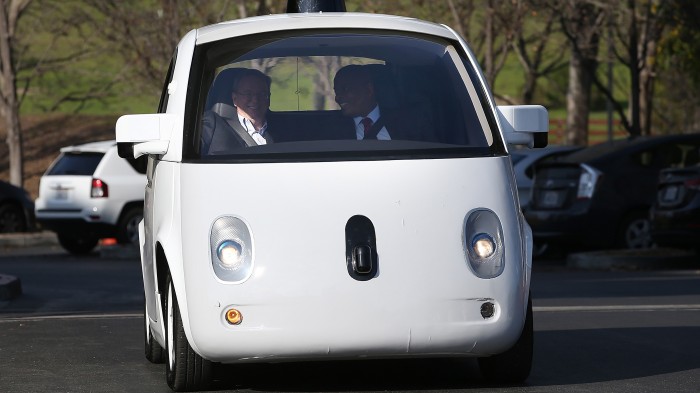Google’s Self-Driving AI Counts as a “Driver,” According to the Feds
The federal agency that regulates vehicle safety standards in the U.S. has told Google that it considers the computer systems controlling its self-driving cars to be “drivers.”
The statement, made in a letter from the National Highway Traffic Safety Administration (NHTSA) to Google (now a subsidiary of Alphabet), marks a significant step toward allowing self-driving cars to be sold and operated on U.S. roads.
Google’s efforts to create a fully automated vehicle without a steering wheel or pedals had previously been stymied by California regulations stipulating that a “driver” must be behind the wheel in case of emergency.
In a letter addressed to Chris Urmson, the head of the self-driving car project, the NHTSA essentially overrules that. “If no human occupant of the vehicle can actually drive the vehicle, it is more reasonable to identify the ‘driver’ as whatever (as opposed to whoever) is doing the driving,” the letter reads. “We agree with Google its SDV [self-driving vehicles] will not have a 'driver' in the traditional sense that vehicles have had drivers during the last more than one hundred years.”
The NHTSA is moving quickly to provide a framework for states to regulate self-driving vehicles, with guidelines expected within the next six months. But that doesn’t mean that the agency doesn’t foresee safety challenges with self-driving vehicles.
On Tuesday, in fact, the administrator of the NHTSA, Mark Rosekind, visited MIT to discuss the implications of self-driving vehicles. Interestingly, Rosekind ranked technology as less important than either human factors or regulation and infrastructure in bringing the technology to market.

“That’s saying that the AI is good enough,” says Bryan Reimer, a research scientist at MIT who studies self-driving systems and organized the event.
Reimer’s own research has shown that managing human behavior behind the wheel of a self-driving car may be the most problematic issue of all. Drivers generally do a poor job of monitoring automated systems, and so they are rarely able to retake control quickly.
“Most of the auto industry, and Google, are still treating it as a technology issue,” Reimer says. “But if you want to get innovation to market, the hard stuff is the most unpredictable—us.”
Keep Reading
Most Popular
Large language models can do jaw-dropping things. But nobody knows exactly why.
And that's a problem. Figuring it out is one of the biggest scientific puzzles of our time and a crucial step towards controlling more powerful future models.
How scientists traced a mysterious covid case back to six toilets
When wastewater surveillance turns into a hunt for a single infected individual, the ethics get tricky.
The problem with plug-in hybrids? Their drivers.
Plug-in hybrids are often sold as a transition to EVs, but new data from Europe shows we’re still underestimating the emissions they produce.
Stay connected
Get the latest updates from
MIT Technology Review
Discover special offers, top stories, upcoming events, and more.